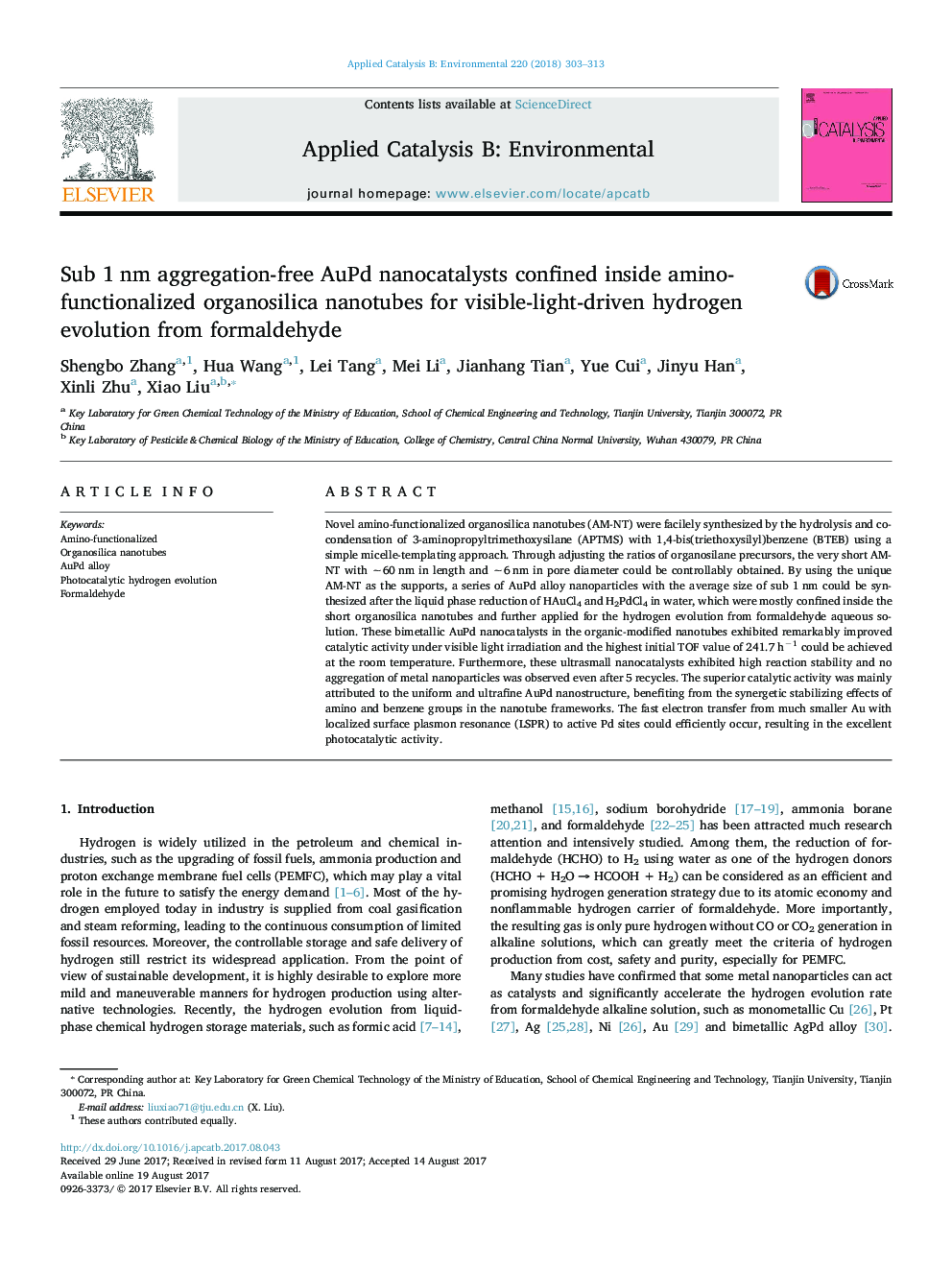| کد مقاله | کد نشریه | سال انتشار | مقاله انگلیسی | نسخه تمام متن |
|---|---|---|---|---|
| 6453602 | 1418800 | 2018 | 11 صفحه PDF | دانلود رایگان |

- Short amino-functionalized organosilica nanotubes are controllably synthesized.
- Uniform and ultrafine AuPd alloys confined inside the nanotubes are prepared.
- Photocatalytic hydrogen evolution of AuPd alloys from formaldehyde is studied.
- Aggregation-free AuPd alloys show improved photocatalytic activity and durability.
Novel amino-functionalized organosilica nanotubes (AM-NT) were facilely synthesized by the hydrolysis and co-condensation of 3-aminopropyltrimethoxysilane (APTMS) with 1,4-bis(triethoxysilyl)benzene (BTEB) using a simple micelle-templating approach. Through adjusting the ratios of organosilane precursors, the very short AM-NT with â¼60Â nm in length and â¼6Â nm in pore diameter could be controllably obtained. By using the unique AM-NT as the supports, a series of AuPd alloy nanoparticles with the average size of sub 1Â nm could be synthesized after the liquid phase reduction of HAuCl4 and H2PdCl4 in water, which were mostly confined inside the short organosilica nanotubes and further applied for the hydrogen evolution from formaldehyde aqueous solution. These bimetallic AuPd nanocatalysts in the organic-modified nanotubes exhibited remarkably improved catalytic activity under visible light irradiation and the highest initial TOF value of 241.7Â hâ1 could be achieved at the room temperature. Furthermore, these ultrasmall nanocatalysts exhibited high reaction stability and no aggregation of metal nanoparticles was observed even after 5 recycles. The superior catalytic activity was mainly attributed to the uniform and ultrafine AuPd nanostructure, benefiting from the synergetic stabilizing effects of amino and benzene groups in the nanotube frameworks. The fast electron transfer from much smaller Au with localized surface plasmon resonance (LSPR) to active Pd sites could efficiently occur, resulting in the excellent photocatalytic activity.
196
Journal: Applied Catalysis B: Environmental - Volume 220, January 2018, Pages 303-313